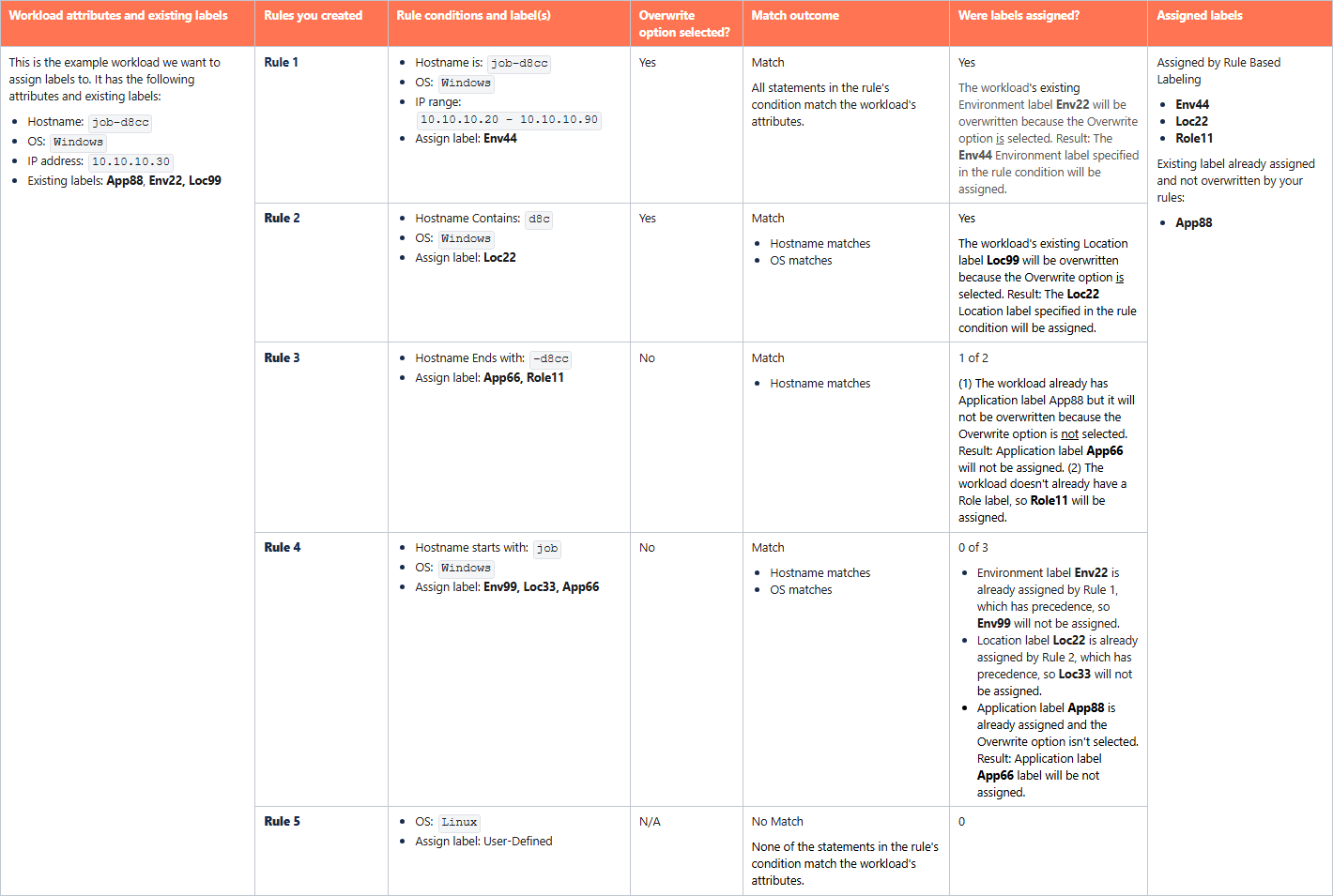How Label Matching Works
This section provides a detailed example of the Rule-Based Labeling feature's label matching logic. It also presents a brief list of terms used throughout this document.
When you click Review and Assign Labels to generate a list of workloads that match your labeling rules, workloads are evaluated against the conditions defined in the rules.
A match occurs if all of the statements in a rule's condition match a workload's attributes.
Terminology
Rule: Rules consist of a condition and one or more label(s).
Condition: Conditions are the user-defined criteria that workloads must match to be eligible for label assignment. A condition consists of one or more statements connected by AND, ensuring that workloads must satisfy all statements of the condition to match the rule.
Statement: Statements define the specific workload attributes, operators, and values that are evaluated. Multiple values within a statement are considered using OR, allowing you to specify match criteria flexibly.
Precedence: Rules are numbered, with Rule 1 having the highest precedence. A workload is evaluated against the rules in order, ensuring that rules with the labeling criteria most important to you are considered first.
Matching Logic
Example: Workload and Rule Evaluation
